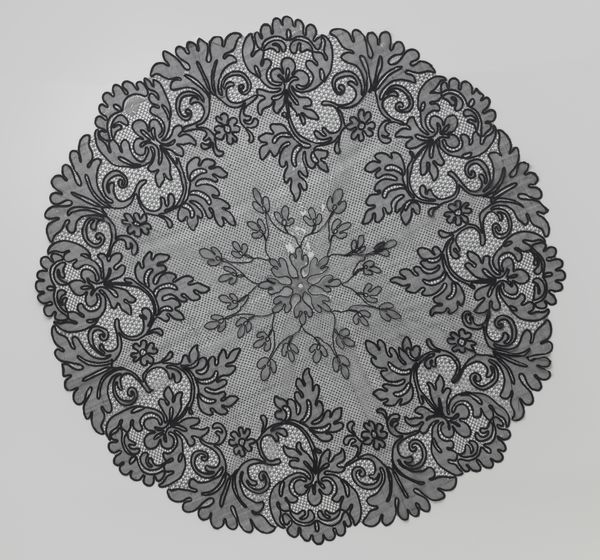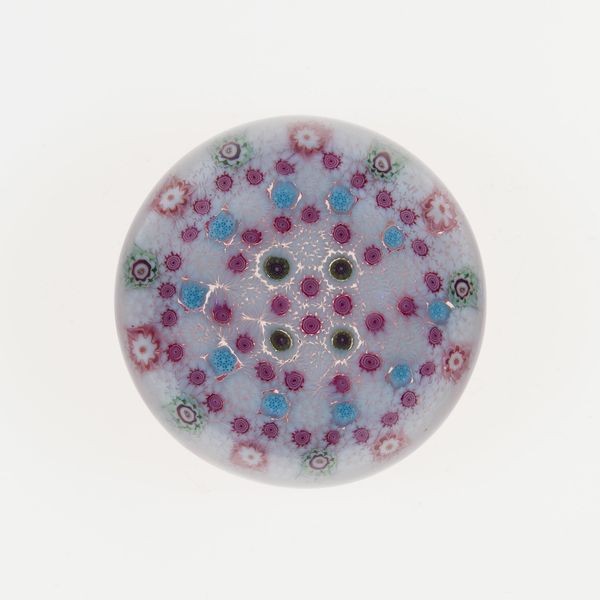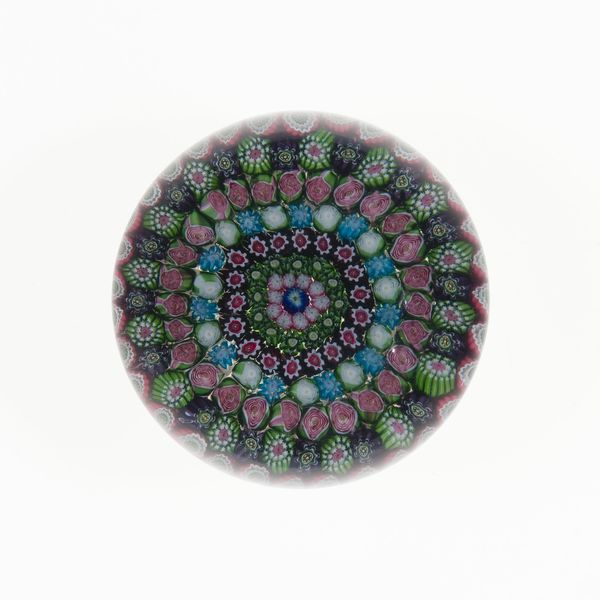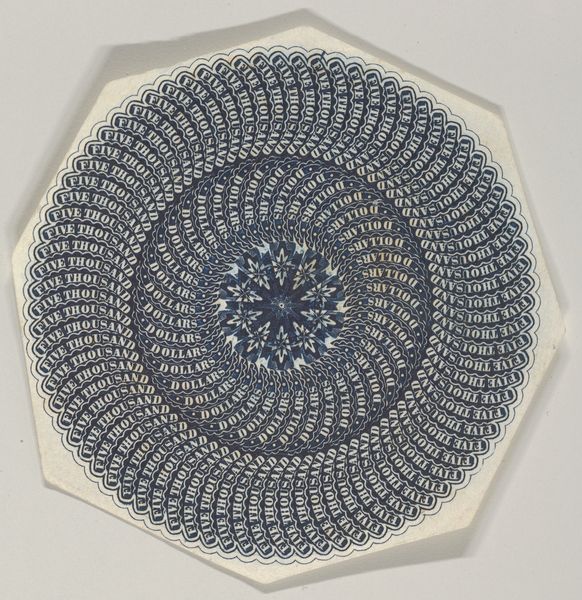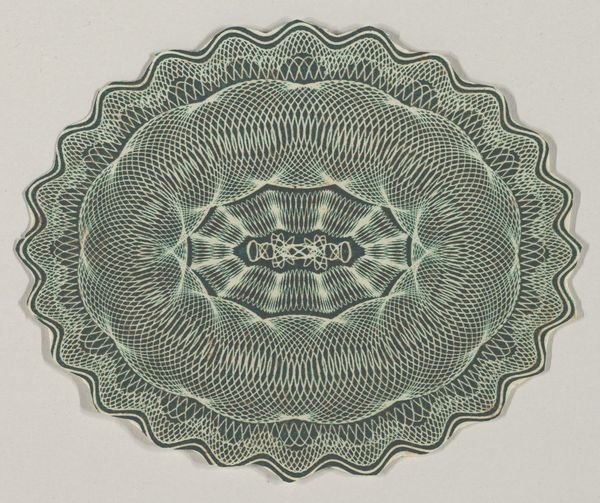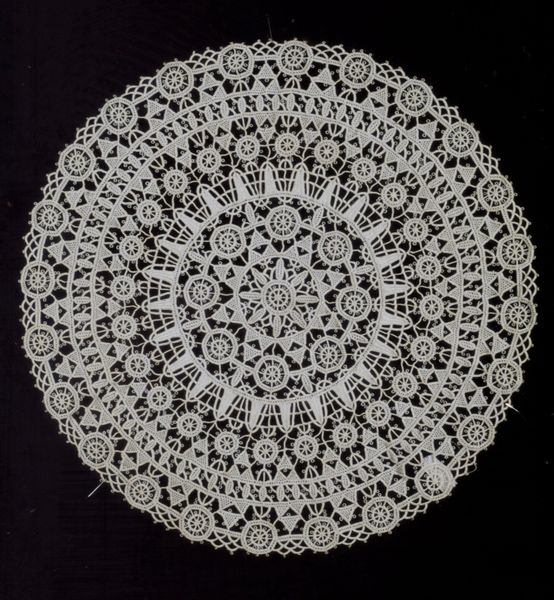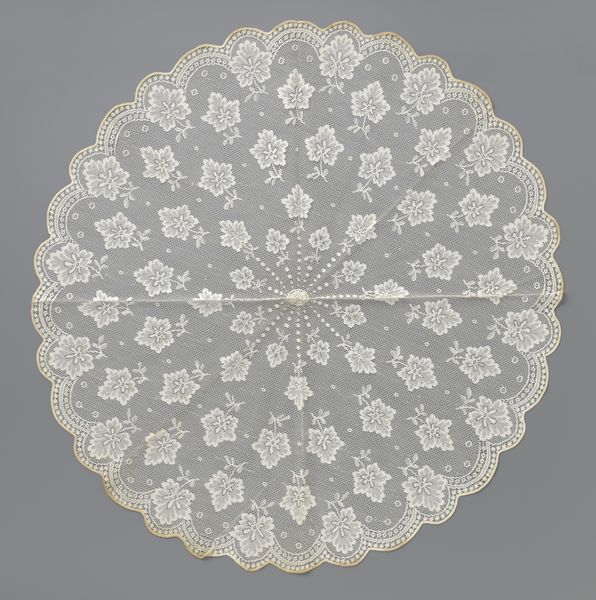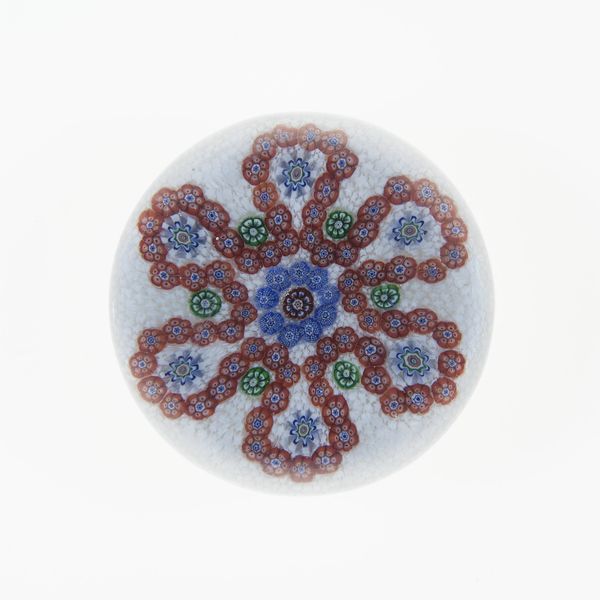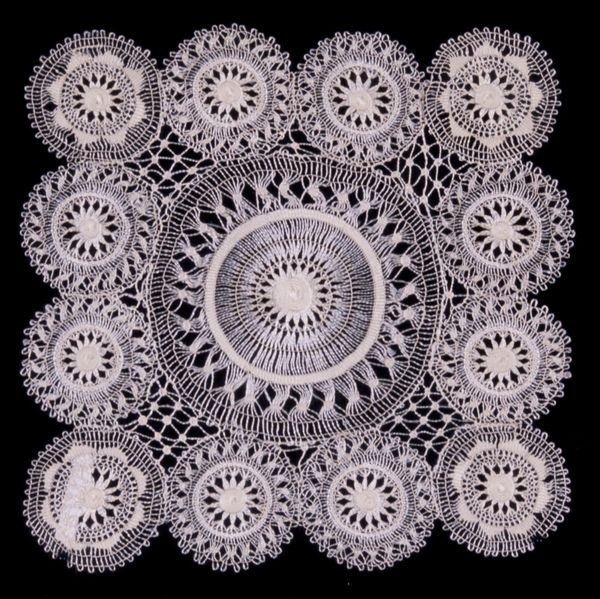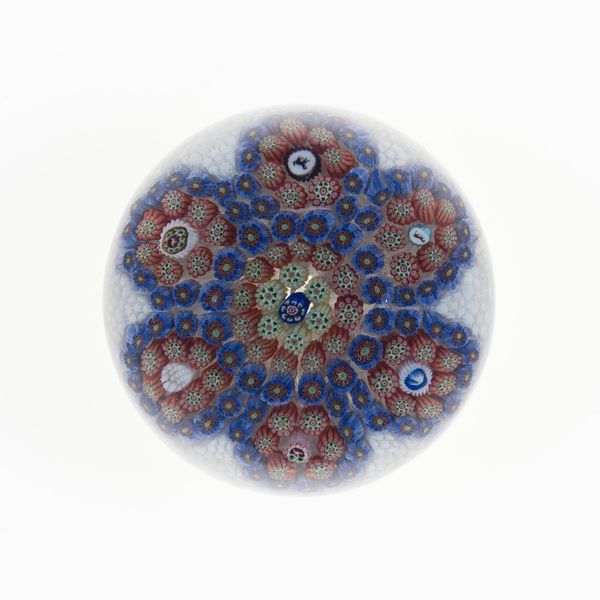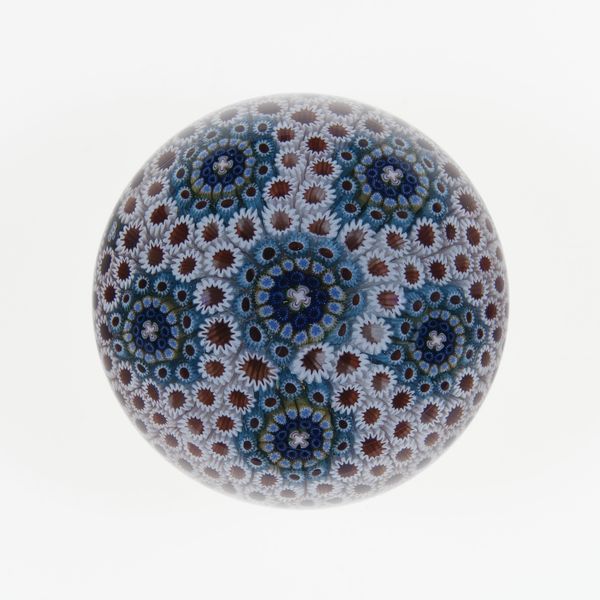
Parasoldek van zwarte tule versierd met met zwart tamboereerwerk in de vorm van strooibloemen, een centrale ster en een bloemrank c. 1875 - 1900
0:00
0:00
fibre-art, textile
#
natural stone pattern
#
fibre-art
#
circular oval feature
#
naturalistic pattern
#
textile
#
repetitive shape and pattern
#
organic pattern
#
flower pattern
#
repetition of pattern
#
intricate pattern
#
pattern repetition
#
decorative-art
#
layered pattern
Copyright: Rijks Museum: Open Domain
Curator: Let's turn our attention to this stunning parasol top housed here at the Rijksmuseum. It's an exquisite example of late 19th-century craftsmanship, dating roughly between 1875 and 1900. The title given is "Parasoldek van zwarte tule versierd met met zwart tamboereerwerk in de vorm van strooibloemen, een centrale ster en een bloemrank," and its delicate embroidery immediately captures the eye. Editor: It has a strikingly ghostly elegance, doesn't it? The black thread against the sheer tulle creates these lovely, intricate patterns. The interplay of texture and light is just remarkable. It feels at once substantial and ethereal. Curator: Absolutely. When we think about the era, the late Victorian period, a parasol was much more than a sunshade; it was a significant fashion statement, a symbol of status. The choice of black, rather than a brighter color, suggests perhaps mourning or a subdued elegance favored in certain social circles. This piece speaks to the complexities of feminine roles, expectations of modesty and mourning practices woven, quite literally, into everyday objects. Editor: Looking at the craftsmanship, the meticulous tambour embroidery, the way those floral motifs are both scattered and organized…it's clear that this was the work of someone highly skilled. The circular layout too adds to the harmonious effect. Notice how the central star motif anchors the entire composition, radiating outwards. It guides the eye, framing those delightful scattered flowers. Curator: And considering textile production during that era, we have to acknowledge the labor—often exploitative—that went into creating these intricate designs. Were these artisan, women workers exercising skill under potentially grueling conditions, with some social empowerment despite hardship? Editor: From a formal standpoint, the piece is an investigation into pattern and repetition. The way that embroidery defines and articulates its subtle texture in black—it’s quite effective. I like the double outline. Curator: Exactly. Each little flower almost hovers within its meticulously crafted boundary. I think a closer study of this would invite interesting comparison and contextualization to other fibre artworks throughout time, looking at labour, economy and art in intersection. Editor: Agreed. There's a quiet power in the intimate scale of this work. Curator: Indeed. Its scale brings us closer to this tangible aspect of Victorian society and female culture. Editor: Well, I certainly find new appreciation for its nuanced detail now. Curator: It has opened new questions about value, about who makes art and what we value in our historical assessments.
Comments
No comments
Be the first to comment and join the conversation on the ultimate creative platform.
